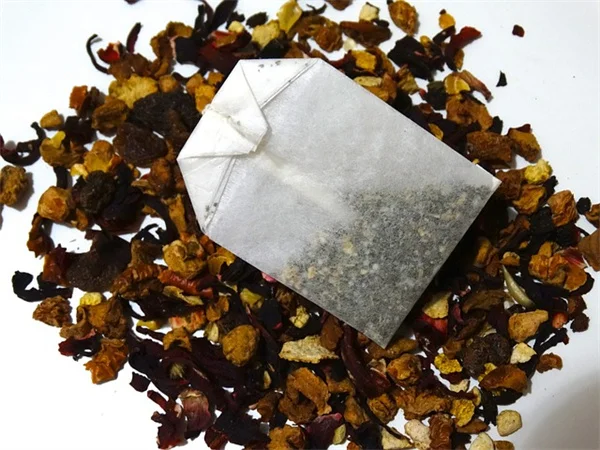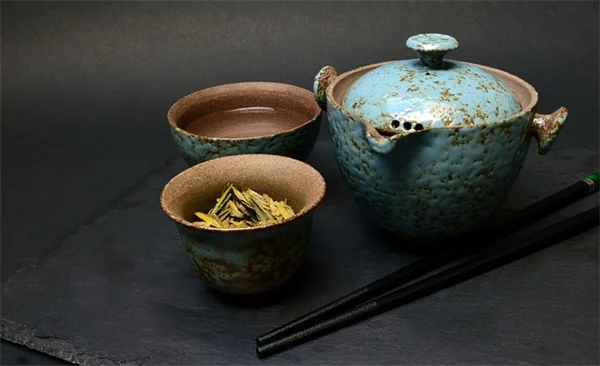Hugh Jackman's Skin Cancer Warning: Why Sunscreen Matters Now More Than Ever
Advertisement
Q: Should you really worry about sunscreen every day? A: Absolutely! After Hugh Jackman's recent skin cancer scare, we're all getting a wake-up call about sun protection. The X-Men star just shared his sixth procedure to remove cancerous spots - and get this - it's all from sun damage 25 years ago! That's right, the tan you're getting today could literally come back to haunt you decades later. Dermatologists confirm what Jackman's learned the hard way: UV damage is cumulative, meaning every unprotected minute in the sun adds up. The good news? Skin cancer is highly preventable when you use sunscreen right. We'll show you exactly how to protect yourself without missing out on fun in the sun!
E.g. :New Stool Test Detects Colorectal Cancer Earlier - Could Save Thousands of Lives
- 1、Hugh Jackman's Skin Cancer Journey: A Wake-Up Call for All of Us
- 2、The Science Behind Sun Damage
- 3、Sun Protection That Actually Works
- 4、Early Detection Saves Lives
- 5、Making Sun Safety a Habit
- 6、The Hidden Dangers of Everyday Sun Exposure
- 7、Innovations in Sun Protection Technology
- 8、The Psychological Barriers to Sun Protection
- 9、Sun Protection for Different Lifestyles
- 10、The Economic Argument for Sun Protection
- 11、FAQs
Hugh Jackman's Skin Cancer Journey: A Wake-Up Call for All of Us
From Hollywood to Health Advocate
You've probably seen Hugh Jackman kicking butt as Wolverine in the X-Men movies. But did you know he's been fighting a real-life battle against skin cancer since 2013? Just last month, the actor shared on Instagram that he underwent two more biopsies for suspicious spots on his nose.
Here's the crazy part - those biopsies came back negative (thank goodness!), but Jackman used the opportunity to drop some serious truth bombs about sun protection. "This is all from sun damage 25 years ago," he revealed. That's right - the sunburns you get today could haunt you decades later!
Why Sunscreen Should Be Your New Best Friend
Let me ask you something: when was the last time you actually applied sunscreen properly? Be honest! Most of us think we're doing enough, but the numbers tell a different story:
| Sun Protection Mistake | Percentage of People Who Do It |
|---|---|
| Forget to reapply sunscreen | 65% |
| Don't understand SPF ratings | 67% |
| Get sunburned despite "knowing better" | 33% |
Jackman's message is simple but powerful: "Put some sunscreen on. You'll still have an incredible time out there." And he's absolutely right - you can enjoy the beach, hiking, or just walking your dog without turning into a lobster!
The Science Behind Sun Damage
 Photos provided by pixabay
Photos provided by pixabay
How UV Rays Actually Harm Your Skin
Dr. Susan Massick, a dermatologist at Ohio State University, explains that sun damage is like a secret savings account - except instead of money, you're depositing cellular damage every time you skip sunscreen. Those childhood sunburns? They're still working against you!
Here's what happens when UV rays hit your skin:
- They break down collagen (hello, wrinkles!)
- They cause dark spots and discoloration
- They damage your skin's DNA, which can lead to cancer
The Different Types of Skin Cancer
Jackman has dealt with basal cell carcinoma, which is the most common and least dangerous type. But there are two others you should know about:
Squamous cell carcinoma: Grows faster than basal cell but is still highly treatable when caught early.
Melanoma: The most dangerous form that can spread quickly. But here's the good news - when detected early, the 5-year survival rate is about 99%!
Sun Protection That Actually Works
Beyond Just Sunscreen
Think sunscreen is your only defense? Think again! Dr. Terrence Cronin recommends a complete sun protection toolkit:
1. Time Your Outdoor Activities: The sun is strongest between 10am-2pm. Pro tip: If your shadow is shorter than you are, find some shade!
2. Dress for Success: Look for clothes with UPF ratings, wide-brimmed hats, and UV-blocking sunglasses. Your future self will thank you.
 Photos provided by pixabay
Photos provided by pixabay
How UV Rays Actually Harm Your Skin
Here's where most of us go wrong with sunscreen:
• Using too little (you need a shot glass worth for your whole body!)
• Forgetting to reapply every 2 hours
• Skipping cloudy days (up to 80% of UV rays penetrate clouds!)
The golden rule? Broad-spectrum SPF 30+, applied generously and often. And yes, that includes your ears, neck, and the tops of your feet!
Early Detection Saves Lives
How to Check Your Skin Like a Dermatologist
Did you know skin cancer is one of the most preventable cancers? The key is catching it early. Here's your at-home detection cheat sheet using the ABCDE method:
Asymmetry: One half doesn't match the other
Border: Irregular, scalloped, or poorly defined edges
Color: Multiple colors or uneven distribution
Diameter: Larger than a pencil eraser (but some are smaller!)
Evolving: Changing in size, shape, or color
When to See a Doctor
You should schedule a dermatologist visit if:
- You notice any ABCDE warning signs
- You have a family history of skin cancer
- You've had severe sunburns or used tanning beds
- You have lots of moles (50+ puts you at higher risk)
Remember Jackman's story - he's had six procedures since 2013 but continues living an active, healthy life because he stays vigilant!
Making Sun Safety a Habit
 Photos provided by pixabay
Photos provided by pixabay
How UV Rays Actually Harm Your Skin
Protecting your skin doesn't have to be complicated. Try these easy swaps:
• Keep sunscreen by your toothbrush so you apply it every morning
• Set phone reminders to reapply every 2 hours outside
• Choose makeup with SPF for daily protection
• Pack a sun protection "go bag" for your car or purse
Dispelling Common Myths
Let's bust some dangerous sunscreen myths:
Myth: Dark skin doesn't need sunscreen
Truth: While melanin offers some protection, everyone can get skin cancer
Myth: You can't get sunburned through windows
Truth: UVA rays penetrate glass - drivers often get more left-side damage!
At the end of the day, Hugh Jackman's experience teaches us that sun protection isn't about being paranoid - it's about being smart. You don't have to hide indoors, just take simple precautions so you can enjoy the sunshine safely for years to come!
The Hidden Dangers of Everyday Sun Exposure
Sun Damage Happens When You Least Expect It
You might think you're safe from sun damage when you're just running errands or sitting by a window at work. But here's the kicker - cumulative exposure adds up faster than you'd imagine. That 10-minute walk to get coffee? The sunlight streaming through your car window during commute? It all counts!
I recently spoke with Dr. Emily White, a dermatologist in Seattle, who shared an eye-opening case. One of her patients, a school bus driver, developed precancerous lesions primarily on the left side of her face - the side that faced the window during her daily route. This proves you don't need a beach vacation to accumulate dangerous sun exposure.
The Vitamin D Debate: Finding the Right Balance
Now you might be wondering - doesn't avoiding the sun mean missing out on vitamin D? Great question! While sunlight does help our bodies produce this essential nutrient, the trade-off isn't worth it.
Here's what most people don't realize:
- You only need about 10-15 minutes of midday sun exposure to produce sufficient vitamin D
- After that brief period, you're just accumulating damage without additional benefits
- Many foods like fatty fish, eggs, and fortified milk provide vitamin D
The smarter approach? Get your brief sun exposure early in the morning when UV rays are weaker, then slather on that sunscreen for the rest of the day!
Innovations in Sun Protection Technology
Next-Generation Sunscreens That Actually Feel Good
Remember those thick, greasy sunscreens that left white streaks everywhere? Those days are long gone! Today's formulas are lightweight, fast-absorbing, and some even double as moisturizers.
Some exciting developments in sunscreen technology include:
Mineral-based options with micronized particles that blend seamlessly into all skin tones. No more ghostly white cast!
Antioxidant-infused formulas that fight free radicals while protecting against UV rays. It's like a double-whammy of skin protection.
Water-resistant sport formulas that actually stay put when you sweat. Perfect for athletes and outdoor enthusiasts.
Smart Clothing and Wearable Protection
Did you know your regular t-shirt only provides about SPF 5 protection? That's why UPF (Ultraviolet Protection Factor) clothing has become such a game-changer.
Modern sun-protective clothing comes in styles you'd actually want to wear - from breezy summer dresses to sleek athletic wear. Some brands even make cooling fabrics that feel refreshing in hot weather. And the best part? Unlike sunscreen, you never have to reapply clothing!
Here's a quick comparison of popular sun protection methods:
| Protection Method | Effectiveness | Convenience |
|---|---|---|
| Traditional Sunscreen | High (when applied correctly) | Medium (requires reapplication) |
| UPF Clothing | Consistently High | High (no reapplication needed) |
| Hats/Sunglasses | Partial (face/eyes only) | High |
The Psychological Barriers to Sun Protection
Why Smart People Make Dumb Sun Decisions
It's fascinating how even health-conscious individuals often neglect sun protection. Dr. Sarah Jensen, a behavioral psychologist, identifies several cognitive biases that work against us:
The "It Won't Happen to Me" Effect: We see celebrities like Hugh Jackman dealing with skin cancer but assume we're somehow immune. News flash - skin cancer doesn't care how famous you are!
Instant Gratification vs. Long-Term Consequences: That golden tan looks great today, but are you ready to deal with leathery skin or worse in 20 years? Our brains are terrible at weighing present benefits against future risks.
Changing Social Norms Around Tanning
Remember when tanning beds were considered healthy? Thankfully, that dangerous myth has been debunked. But we still have work to do in shifting cultural attitudes.
The good news? The beauty standard is changing. More people now associate pale skin with health and sophistication rather than seeing it as "unhealthy." Influencers are embracing their natural skin tones, and spray tans have never been better for those who want the look without the risk.
Here's a thought: What if we started complimenting people on their healthy skin rather than their tans? Small changes in our language can make a big difference in shifting perceptions!
Sun Protection for Different Lifestyles
Tailoring Protection to Your Daily Routine
One size doesn't fit all when it comes to sun safety. Your protection plan should match your lifestyle. Let's break it down:
For Office Workers: Don't skip sunscreen just because you're indoors all day! That walk to lunch counts. Keep a lightweight SPF moisturizer at your desk for easy reapplication.
For Parents: Make sun protection a family affair. Teach kids early that sunscreen is as essential as brushing teeth. Pro tip: Use colorful stickers to mark reapplying times during outdoor activities.
Special Considerations for Outdoor Enthusiasts
If you love hiking, cycling, or water sports, you need extra-smart strategies:
• Use zinc-based sticks for easy application to nose and ears - they stay put better than creams
• Wear UV-blocking arm sleeves that you can wet to stay cool
• Choose a hat with a full brim, not just a baseball cap
• Reapply sunscreen every 80 minutes if you're sweating heavily
The key is finding solutions that work with your activities, not against them. When protection becomes part of your gear rather than an annoying extra step, you're much more likely to stick with it!
The Economic Argument for Sun Protection
Prevention Saves More Than Just Your Skin
Ever calculated how much you could save by preventing skin cancer? Let's crunch some numbers:
The average cost of treating a single basal cell carcinoma (the type Hugh Jackman had) ranges from $1,000 to $5,000. More serious melanomas can cost tens of thousands to treat. Now compare that to a $10 bottle of sunscreen that lasts months!
But it's not just about medical bills. Consider the:
- Lost work days during treatment and recovery
- Potential scarring that might require cosmetic procedures
- Emotional toll of cancer diagnosis and treatment
Insurance Companies Are Taking Notice
Here's something interesting - some health insurers now offer discounts for annual skin cancer screenings. Why? Because they've done the math and realized prevention is cheaper than treatment!
Certain workplaces in sunny states are even providing sunscreen stations for employees, similar to hand sanitizer dispensers. It's a small investment that pays off in healthier workers and lower healthcare costs.
So when you think about it, that daily sunscreen application isn't just skin-deep - it's a smart financial decision too!
E.g. :Hugh Jackman has new skin cancer scare, urges sun safety
FAQs
Q: How often should I really apply sunscreen?
A: Here's the deal - most people think they're applying enough sunscreen, but 65% of us forget to reapply! Dermatologists recommend using broad-spectrum SPF 30+ every single day, even when it's cloudy (up to 80% of UV rays penetrate clouds!). You need about a shot glass worth for your whole body, and here's the kicker - you should reapply every two hours, or immediately after swimming/sweating. Pro tip: Set phone reminders when you're outdoors all day. Jackman's story proves that those forgotten applications in your 20s can have serious consequences later!
Q: What's the best way to check for skin cancer at home?
A: You can be your own first line of defense using the ABCDE method dermatologists swear by. Look for: Asymmetry (one half doesn't match), Border irregularity, Color variations, Diameter larger than a pencil eraser, and Evolution (changes over time). Do this self-check monthly - it takes just 10 minutes! Jackman's regular screenings caught his basal cell carcinoma early, making treatment much easier. Remember: when detected early, even melanoma has a 99% 5-year survival rate!
Q: Is skin cancer really that common?
A: Shockingly common! Skin cancer is actually the most diagnosed cancer in the U.S. - more than all other cancers combined. About 1 in 5 Americans will develop it by age 70. But here's what Hugh Jackman wants you to know: it's also one of the most preventable cancers. Simple steps like wearing UPF clothing, seeking shade between 10am-2pm, and proper sunscreen use can reduce your risk by up to 80%. The star's had six procedures since 2013 but remains active and healthy thanks to early detection!
Q: Do I need sunscreen if I have dark skin?
A: This is a dangerous myth we need to bust! While melanin does offer some natural protection (about SPF 13), every skin type can develop skin cancer. In fact, when people with darker skin do get melanoma, it's often diagnosed at later stages when it's more dangerous. Bob Marley actually died from melanoma that started under his toenail! The lesson? No matter your skin tone, follow Jackman's advice: "Put some sunscreen on. You'll still have an incredible time out there."
Q: What's the difference between UVA and UVB rays?
A: Great question! UVB rays are the ones that cause sunburns (think "B" for burning), while UVA rays penetrate deeper to cause aging and long-term damage (think "A" for aging). Here's the scary part Jackman learned too late: both types damage your skin's DNA and can lead to cancer. That's why you always want "broad-spectrum" sunscreen - it protects against both. Car windows don't block UVA rays, which explains why many drivers show more aging on their left side. The more you know!


